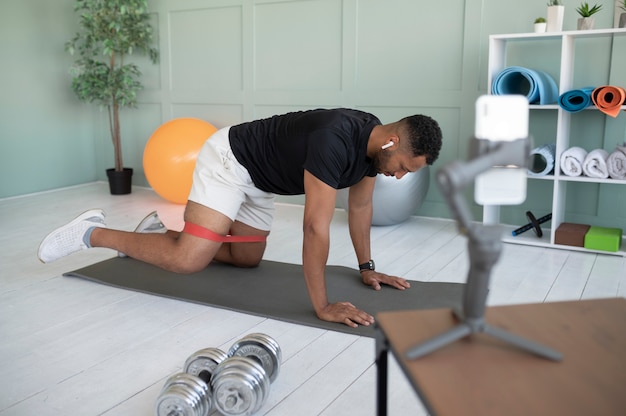Building muscle doesn’t have to mean hours in the gym or risking back strain. For those juggling tight schedules and dealing with back pain, traditional workouts can feel overwhelming — or even dangerous. But with smart strategies, minimal gear, and body-aware training, you can gain strength safely and efficiently.
This guide delivers 25 practical, time-efficient muscle gain tips tailored for real life. Whether you're working from home, commuting daily, or managing chronic discomfort, these methods prioritize joint safety, time economy, and progressive overload — without requiring a full home gym.

Exercises that work multiple muscle groups save time and reduce spinal load when performed correctly. Push-ups, bodyweight squats, and incline close-grip presses (using a sturdy table or bench) engage the chest, shoulders, triceps, and legs — all without heavy weights.
Flat bench presses can compress the lower back. Incline variations (using a couch or step) reduce spinal strain while still targeting the upper chest and shoulders effectively.
Two 15-minute sessions a day can be as effective as one 30-minute session. Use high-intensity bodyweight circuits: 3 rounds of push-ups, glute bridges, and planks (45 seconds each).
Poor form increases injury risk, especially with back pain. Move slowly, control each rep, and avoid arching your back. Quality reps beat quantity every time.
Planks, wall sits, and static lunges build strength without joint movement — ideal for sensitive backs. Hold each for 20–40 seconds to stimulate muscle growth safely.

Light to medium resistance bands offer progressive tension with minimal spinal load. Perform band rows, presses, and pull-aparts to build upper body muscle without heavy lifting.
A strong core supports your spine. Add 5 minutes of dead bugs, bird-dogs, or abdominal bracing exercises to your routine to protect your back and improve lifting mechanics.
Gentle walking or stretching on rest days boosts blood flow and speeds recovery. Avoid complete inactivity — it worsens stiffness and delays muscle repair.
Use stairs for step-ups or incline push-ups. These natural tools provide resistance while allowing you to control range of motion and protect your back.
Schedule workouts when your back feels best — often mid-morning after gentle movement. Avoid intense training first thing if stiffness is an issue.
If you can't add weight, increase reps or time under tension. Going from 10 to 15 push-ups is progress — celebrate it.
Stand with your back against a wall and slide arms up and down. This improves thoracic mobility and reduces forward-shoulder strain that can worsen back pain.
Muscle growth needs fuel. Aim for 1.6–2.2g of protein per kg of body weight daily. Opt for eggs, Greek yogurt, or plant-based proteins if cooking time is limited.
Lowering slowly (e.g., 5-second descent in a push-up) builds strength with less compressive force. This is gentler on the spine and highly effective for hypertrophy.
Fill a backpack with books for weighted squats or lunges. A gallon of water weighs ~8 lbs — perfect for overhead presses.
Sitting compresses spinal discs. Stand or walk lightly between sets to maintain circulation and reduce stiffness.

Weak glutes shift strain to the lower back. Do glute bridges or clamshells before leg workouts to engage the right muscles.
Allow 48 hours between intense sessions. This supports recovery and reduces inflammation — crucial for those with back sensitivity.
When lying down for floor exercises, place a small pillow under your lower back to maintain neutral spine alignment.
Deep belly breathing activates core stabilizers and reduces tension. Do 2 minutes before and after workouts to enhance performance and recovery.
Avoid toe touches or sit-ups. Replace with standing side bends or Pallof presses using a band to build obliques safely.
Attach a resistance band to a door and perform seated or standing rows. This builds back muscle without loading the spine.
Arm circles, leg swings, and cat-cow motions prepare muscles and joints without straining the back.
Poor sleep disrupts muscle recovery. Use a firm mattress and sleep on your side with a pillow between knees to align the spine.
If pain persists, get personalized guidance. Many PTs offer virtual sessions and can tailor exercises to your condition.
Building muscle with back pain isn’t about pushing through discomfort — it’s about working smarter. With these 25 tips, you can gain strength, save time, and protect your spine — all with minimal gear and maximum real-world practicality.

Fitness

Fitness

Fitness

Fitness

Fitness

Fitness

Fitness

Fitness

Fitness

Wellness

Fitness

Health

Health

Fitness

Health

Health